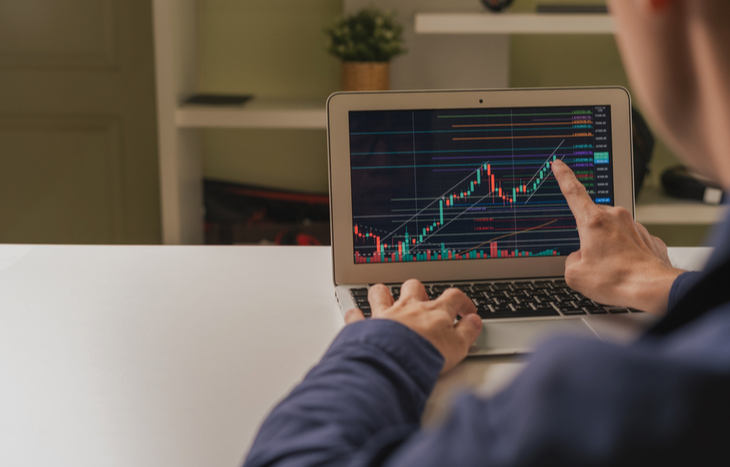What are the Different Types of Investors?
Investing makes the financial world go ‘round. And while every investor has the same objective, the different types of investors have their own approach. At the most basic level, an investor is a person or entity who allocates capital with the expectation of receiving future financial returns. But beyond that, it’s important to consider the circumstances of every investor’s position.
Are you an individual using investments to generate wealth for retirement? An institution focused on debt investing through lending products? A venture capitalist looking for a long-term stake in a business’ growth prospects? Opportunities for investing are endless, but how you invest often depends on who you are.

Equity vs. Debt Investors
At a high level, investors tend to separate into two groups: equity investors and debt investors. This is largely intrinsic to what types of markets each investor is exposed to. For example, individual investors trend to be equity investors by way of their retirement portfolios, which are heavily vested in stocks. Conversely, banks tend to be debt investors: they lend money and collect on the interest.
The delineation between debt investors and equity investors isn’t usually a clear split. Most investors dabble in both, with a portfolio allocation that includes both debt and equity investments, proportioned accordingly.
Short-Term vs. Long-Term Investors
Another divide that separates investors is how long they intend to hold their investments. Day traders and swing traders are in and out of positions in a matter of hours and days, whereas long -term investors hold for years or even decades. While some investments are more illiquid than others, investing thesis plays a big part in how long investors hold their position.
For example, individual investors with qualified retirement accounts tend to hold their investments for decades. Then, in retirement, they pare down their equity to create income. On the opposite side, day traders might have a limited opportunity to arbitrage, which sees them buy and sell an asset in the span of minutes or hours. It comes down to when the investor realized gains: immediately through trades or later after an accumulation period. Short- and long-term strategies are both viable—they just come with different criteria and context.
Investing Thesis Guides Investment Decisions
The final governing factor for investors is their thesis: how they expect to generate return on investment. For some, it’s all about finding growth stocks and capitalizing on tremendous ROI over time. For others, it’s latching on to dividend-paying stocks and reinvesting to accumulate wealth. There are a multitude of investment theses, and the strategy investors execute depends on their thesis. It dictates what they invest in, their time horizon, the signs they look for, and what their risk tolerance is.
Meet the Different Types of Investors
While everyone invests differently, there are certain classes that investors fall into based on their profile. Following are the chief groups of investors and their typical behaviors.
Personal Investors
These are individual investors. Whether they’re saving for retirement through a 401(k) or investing in individual stocks through a brokerage account, they’re typically focused on equities. While most individual investors lack significant buying power, they have complete control over how they invest—short term vs. long-term, as well as the risk they take on. Also in this category are money managers, who invest on behalf of personal investors.
Institutional Investors
These are banks and hedge funds that have much more buying power and the ability to tap into investments that personal investors simply can’t. Institutional investors tend to play both sides of the debt and equity investment mode. For example, hedge funds are strong in equity investments, while banks are rife with debt investments. In either case, institutional investors tend to facilitate much larger movements in the markets they dabble in.
Peer-to-Peer Lenders
Peer-to-peer investing is a form of crowdsourced lending, which has become popular in the internet age. It’s equity investing that comes with a heavy degree of risk, but can reward substantial payouts to those who make sound investments. Peer-to-peer lending can include investments in an up-and-coming business, as well as asset investment.
Venture Capitalists
Venture capitalists are equity investors with a long-term mindset. They invest in early-stage startup companies with the expectation of acquiring a stake in that company’s future revenues. Often, this takes years to culminate and there’s no guarantee the company will IPO or become a successful business. It’s more of a bet on leadership than an investment in an established idea.
Angel Investors
The difference between angel investors and venture capitalists is that angel investors use their own private wealth to fund investments. This is similar to peer-to-peer lending, however it usually results in an equity stake, as opposed to a fixed return on investment. Angel investors take large risks and are subject to larger rewards as a result.
Understand the Playing Field
Every investor plays a role in the broader markets. Personal investors represent the everyday ups and downs of the stock market. Institutional investors help set the tone for interest rates. Venture capitalists, angel investors and peer-to-peer lenders have a hand in creating new forms of wealth-generating commerce. It all comes back to the same concept: investing.
And every form of investing has its risks and rewards. However, the goal remains same in most cases. To generate wealth and gain financial freedom. To learn how you can do the same through smart investment strategies, sign up for the Liberty Through Wealth e-letter below.
It doesn’t matter who you are or how you invest, the simple act of investing helps perpetuate many different aspects of the greater economy. While different types of investors may have different focuses and capabilities, they all play a role in the ebb and flow of wealth. Together, the investing community makes us richer, more prosperous and more lucrative.
[adzerk-get-ad zone="245143" size="4"]




